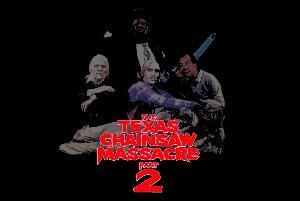
Director: Tobe Hooper
Writer: L.M. Kit Carson
Starring: Dennis Hopper, Caroline Williams, Jim Siedow, Bill Moseley
Rating: R (USA), 18 (UK), MA (Australia)
Despite The Texas Chainsaw Massacre‘s unexpected success, which would become one of the most important horror movies of the seventies, the filmmakers themselves reaped very few rewards for all of the blood, sweet and tears that were spilt during the making of what would come to be considered as a seminal classic. Neither Tobe Hooper or Kim Henkel, who both co-wrote the feature with the former directing and the latter producing, received the royalties that the film had earned and would spend the remainder of the decade desperately searching for work. Hooper would helm the forgettable crocodile caper Eaten Alive before moving onto the critically praised television miniseries Salem’s Lot, eventually making his mainstream debut with the Steven Spielberg-produced blockbuster Poltergeist, a movie which would become a major thorn in the director’s side. After debating returning for the follow-up, he had initially been involved in a 3D adaptation of John Russo’s novel Return of the Living Dead (which itself was a loose sequel to George A. Romero’s zombie masterpiece Night of the Living Dead), before losing patience during pre-production and walking away from the project. This would lead him to the doors of Cannon Films.
Formed in 1967 by Dennis Friedland and Chris Dewey, Cannon were suffering serious financial difficulties when, in 1979, prolific Israel-born producers Menahem Golan and Yoram Globus had acquired the company for just $500,000 and intended to follow their home success with an attempt at conquering Hollywood. The ingenious decision of the two cousins was in purchasing scripts by first-time writers, that other studios would normally dismiss as trash, and transform them into low budget-yet-inventive genre pictures, initially focusing on action flicks such as The Delta Force, American Ninja, Death Wish II and Missing in Action 2: The Beginning. Hooper, desperate to remove the memory of Poltergeist from his mind, signed a three-picture deal with Cannon in 1984, and commenced work on Space Vampires, a $30m science fiction thriller which saw a group of astronauts boarding a derelict spaceship trapped inside Halley’s Comet. Its US distributor, Tri-Star, seemed unsure of how to market the finished result and opted to cut the film by twenty-seven minutes and rename it Lifeforce. The movie was a disaster at the box office, making only a third of its budget, but Hooper was given another $12m to play with for his intended remake of the fifties classic Invaders from Mars. The film marked another blow for the director, who was forced to develop one last feature for the company to complete his contract.
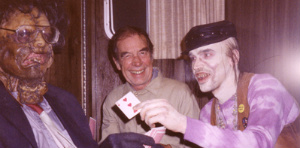
A sequel to The Texas Chainsaw Massacre had been a consideration for Hooper for many years, originally once again as a collaboration between himself and Henkel. This story, entitled Beyond the Valley of the Texas Chainsaw Massacre, would have seen Sally Hardesty being released from a mental asylum, having been left hysterical following her experience with the bizarre family of cannibals years earlier. Along with a group of friends, Sally travelled back to Texas in search of Leatherface, the Old Man and the Hitchhiker, who had survived his collision with the truck, although his skull was partially crushed and his family had kept him tied to a tree. The investors responsible for withholding royalties had since disappeared, leaving Hooper forced into a legal battle for not only the profits that he and his cast and crew were promised, having owned a percentage of the copyright through their company Vortex. As he began to entertain the notion of returning to his first proper feature, New Line Cinema began bidding for the movie, eventually losing out to Cannon. With executive producer Henry Holmes taking over a year to negotiate the rights in a way which would make each party happy, attorney Sam Perlmutter would finally settle the case in court by paying the copyright holders.
Around Christmas 1985, Hooper approached screenwriter L.M. Kit Carson, a fellow Texan whose son, Hunter Carson, and ex-wife, Karen Black, had appeared in his previous film. Hooper had developed a working relationship with Carson back in 1978 when the two had begun working on a project called Dead and Buried, which would sadly remain in development hell. Whilst shopping at the Galleria, a huge mall in Dallas, Carson found himself surrounded by the pretentious yuppie culture of the eighties and, much like Hooper had with the original movie, started fashioning a story centred around images of a chainsaw tearing through flesh. The first draft was completed on March 7, with Carson blending elements from the various recent flicks that he had found were dumbing down the generation, such as John Hughes’ sickly sweet comedy Pretty in Pink (it is worth noting that one poster for The Texas Chainsaw Massacre 2 would mock that of one of Hughes’ other hits, The Breakfast Club). One major theme that the script attempted to explore was how Leatherface and his family, now known as the Sawyers, were old fashioned butchers trying to cope with the capitalist consumerist mentality that America had embraced during the Reagan era.
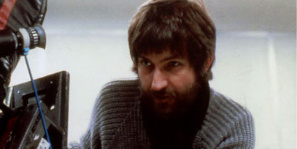
Initially only considering producing the movie, Hooper eventually settled back into the director’s chair and immediately began casting. The only actor to return from the previous film was was Jim Siedow, who would once again portray the Old Man, credited in the second story as Drayton Sawyer. With the idea of Sally jettisoned, actress Marilyn Burns was not approached to reprise her role. Icelandic actor Gunnar Hansen, who had played Leatherface, had only made one movie since 1974, The Demon Lover, and was still without an agent, resulting in the film’s casting agent, Pat Orseth (who had replaced Invaders from Mars‘ Robert McDonald), offering a mere $1,256 a week salary. Despite Hansen finally finding representation, the producers refused to offer a higher amount and instead approached another actor to play the character. Enter Bill Johnson, a thirty-four year old Texan whose career to date had been littered with bit-parts. Via his agent, Sam Balkum of the Austin Actors Clearinghouse, Johnson managed to secure an audition, despite having not seen the first movie (although he had studied years before with several of its stars at the University of Texas Drama Department). Boasting a build close to what the filmmakers had been hoping for, Johnson was subsequently offered the part, although much of the stuntwork and chainsaw wielding would be portrayed by Robert Elmore, whose previous work included Police Academy 2: Their First Assignment.
The Texas Chainsaw Massacre 2‘s script had originally toyed with the idea of seeing the return of the Hitchhiker, as played by Edwin Neal. In mid-May, Hooper had approached the actor’s agent about the sequel, despite his bitterness over the financial irregularities that the cast and crew had been subjected to after the original movie made a killing at the box office. Neal requested to his agent to demand approximately $45,000 for what was to be around a six week shoot, but Cannon refused to comply and any chance of the character returning were quickly abandoned. Instead, a replacement was created, Bo ‘Chop Top’ Sawyer, who had spent the time that the original massacre had taken place fighting in Vietnam where a crushed skull (much like his brother, the Hitchhiker, whose mummified corpse would appear in the movie) was replaced by a metal plate. This role went to newcomer Bill Moseley, who had originally created a four minute spoof called The Texas Chainsaw Manicure a couple of years earlier that had made its way onto Hooper’s desk. For the protagonist, outgoing radio DJ Stretch, the producers hired Caroline Williams, whose previous career had been in a broadcast station. Perhaps the most anticipated performance, though, was that of screen legend Dennis Hopper, whose long stint of self-destruction had come to an end and was beginning to make a comeback, which would later result in a disturbing turn in David Lynch’s Blue Velvet.
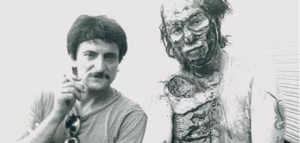
Following on from a succession of groundbreaking FX-based horrors, cult makeup artist Tom Savini was hired to produce the grizzly special effects after the director had viewed a tape entitled Scream Greats that then-Fangoria publisher Kerry O’ Quinn had sent him. With Hooper moving into production so soon after Invaders from Mars, The Texas Chainsaw Massacre 2 went into development without a complete script and allowing Savini very little time to prepare. There were several gruesome set pieces that would guarantee to keep the gore fans happy. The first was the opening sequence which would feature a yuppie having his head sliced in two whilst driving a Mercedes across a bridge. The actor in this scene was Barry Kinyon, a friend of the film’s publicist who had been present on set as Savini was designing the scene and was subsequently given a role. Perhaps the film’s most disgusting effect was with the mutilation of radio engineer L.G (played by Lou Perry, who had worked as an assistant cameraman on the first movie and was sadly murdered early this month in his Texas home), whose skin was peeled from his face and later worn by Stretch. This particular effect was designed by Gino Grognale, who had previously worked for John Carl Buechler’s Mechanical and Makeup Imageries company on From Beyond. Also on hand to assist Savini were Shawn McEnroe (The Howling), Mitch DeVane (Ghoulies) and John Vulich, whom he had collaborated with on Friday the 13th: The Final Chapter.
Although originally budgeted at $2.5m, the demanding shoot eventually raised the cost almost another $2m. Principal photography commenced in June in and around Austin and Prairie, Texas, finally wrapping on July 4. Having already been pre-sold to over a thousand cinemas around America, Cannon had already made a profit before it was released on 22 August 1986, twelve years after the original had made its debut. On its opening weekend it earned an impressive $2,822,439, eventually making a total of $8,025,872 during its entire theatrical run. When the studio submitted the movie to the MPAA for review, the censors threatened to grant the movie the dreaded X rating, prompting the producers to release the feature uncut (a trend popularised by George A. Romero with 1978’s Dawn of the Dead, which Savini also worked on). But when the BBFC stated that over twenty minutes of footage would have to be exorcised before it would be granted a release in the UK, Cannon decided to abandon the idea and left the movie unavailable in Britain until the dawn of the DVD. Despite its shift in tone to a more comical feel, the film became a big hit on VHS during the eighties, accompanied by a soundtrack (featuring the likes of The Lords of the New Church, The Cramps and Concrete Blonde), which was never released on CD. To date, The Texas Chainsaw Massacre 2 would mark Tobe Hooper’s last official involvement with the franchise, aside from a superficial producer’s credit on the remake and its prequel.
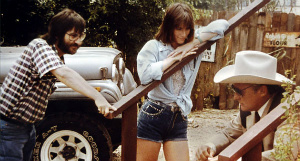

6 Responses to THE MAD AND THE MACABRE pt.2 – The Texas Chainsaw Massacre 2 (1986)